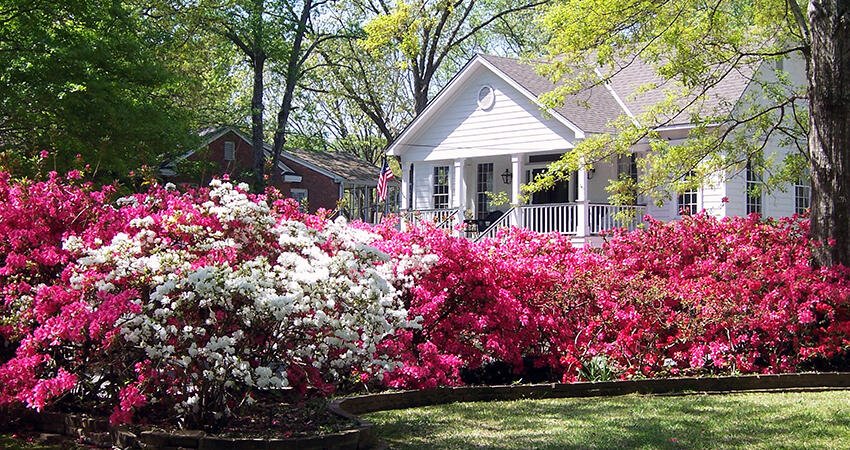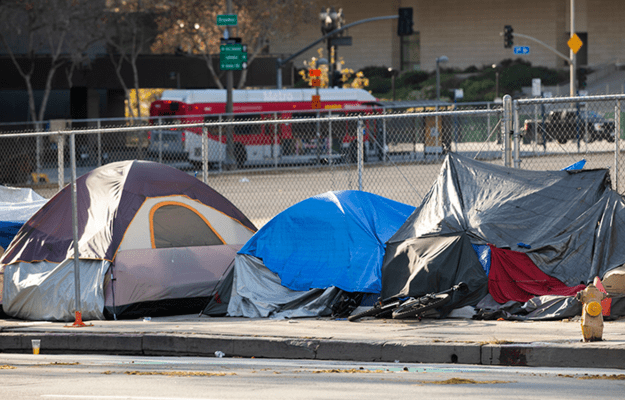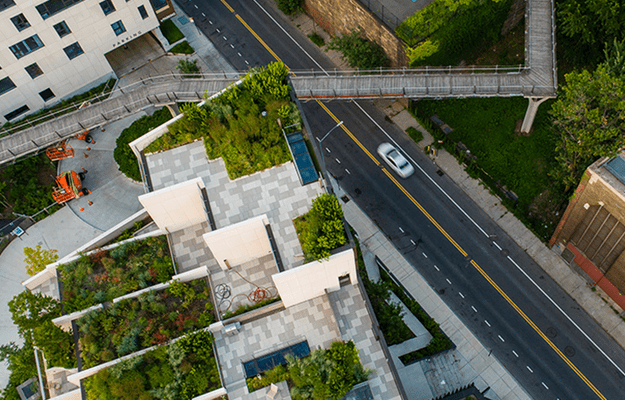
(Allan C Collins/Shutterstock)
Inadequate Home Improvement Financing Preserves Racial Disparities in Housing Quality
Homeownership is touted as a key way to improve household wealth and stability. A home is typically the largest item on a household’s balance sheet, and this is particularly true for Black households, as home equity makes up a larger portion of their balance sheets compared with white households. But what if one’s home, one’s largest asset and main source of wealth, one’s place to rest and be comfortable, is in bad condition?
In new research, my Urban Institute colleagues and I explored this question, finding that overall, very few homeowners live in homes in inadequate condition (defined as a home that does not meet the standard of a decent home and suitable living environment). According to the 2021 American Housing Survey (AHS), only 3.4 percent of all homeowners live in inadequate homes. But Black homeowners live in inadequate homes at nearly double the rate of white homeowners, with 5.7 percent of Black homeowners living in these homes as of 2021. This disparity in access to quality housing reflects, at least in part, historical discrimination, which excluded Black households from certain neighborhoods and often relegated them to neighborhoods with dilapidated homes in poor condition. Even after the Fair Housing Act was passed in 1968, lenders and agents often steered Black households to neighborhoods with older housing stock in worse condition.
What’s more, resources for home improvement financing and assistance aren’t equitably distributed. Public policy has an important role in improving access to high-quality homeownership.
The high cost of homes in poor repair
Low-quality homes are generally more affordable. Median annual mortgage payments, property taxes, and insurance costs per square foot are all lower for inadequate homes than in adequate homes. However, our research found that utility costs buck this trend, with owners of inadequate homes facing higher utility costs per square foot than those in adequate homes.
Black homeowners living in homes in poor condition had higher median annual utility costs per square foot in 2021 and higher annual utility cost burden (annualized utility costs as a share of annual household income) compared with their white counterparts. This likely reflects that inadequate homes are more likely to be older homes, which are less energy efficient.
As a result of these high costs, Black homeowners in inadequate homes are the most likely to receive a utility shutoff notice, with nearly one-quarter of Black homeowners in inadequate homes having received a utility shutoff notice. Overall, 21 percent of Black homeowners received a disconnection notice in 2020, and more than 30 percent reported reducing or forgoing basic necessities because of home energy bills.
Inequalities in the ability to repair
Just as there is an inequality in home renovation needs, there is uneven access to financing for renovation and home improvements. Black homeowners living in inadequate homes face barriers to improving their homes.
Most households pursuing large home improvement projects rely on cash from savings or refinancing or home equity loans to finance improvements. But there are serious racial disparities in both.
The typical white household has about four times the amount of cash held by the typical Black household—a disparity driven by differences in wealth, income, and intergenerational transfers of wealth and assets. These disparities have grown in recent years; from 2019 to 2022, liquid wealth increased for white families, on average, while decreasing for Black families.
Without access to significant cash, Black homeowners will likely need to turn to cash from refinancing or from home equity loans. But Black homeowners are less likely to refinance, and when they do apply, they are more likely than their white counterparts to be denied refinancing loans and home equity loans. Even further, homes in poor condition are also, on average, of lower value. This limits the wealth one can take out of the home to finance home improvements that could improve the home’s condition and value. Put simply, having a home in poor condition can directly limit one’s ability to improve the condition of their home.
Without access to cash or other financing to improve one’s home, homeowners may be forced to make improvements themselves, when possible. Data show that homeowners with lower incomes spend more time per day on household activities than homeowners with higher incomes. Inadequate housing and the need for repair can also have high nonfinancial costs, like time.
How can policymakers mitigate repair inequities?
Public dollars and policy changes are needed to ensure all homes are livable and provide opportunity and stability to residents. Policymakers at different levels can ensure that renovation and rehabilitation dollars are available, particularly for homeowners with lower incomes.
Federal policymakers can take the following steps:
Improve access to and streamline renovation financing and assistance. Streamlined rate refinances have clear benefits and have been shown to work. And by lowering monthly payments, rate refinances can help borrowers convert what they would otherwise be spending on their mortgage into spending on home improvements or modifications.
To do this, Fannie Mae, Freddie Mac—or through the Federal Housing Finance Agency (FHFA) jointly—the Federal Housing Agency (FHA), or the Department of Veterans Affairs (VA) could remove barriers in their refinancing programs, like income verification or income-related conditions, credit score requirements, current or forbearance status, appraisal (automated or otherwise), and new title insurance requirements. Many of these barriers keep borrowers from refinancing, including Black homeowners, who are less likely to refinance but who could benefit the most from refinancing to support home improvements. And the borrowers most likely to be denied refinancing because of these barriers are the borrowers who would benefit the most by reducing monthly payments through a refinance, which will help improve the sustainability of homeownership and reduce risk for the lender.
- Require servicers to establish contact with borrowers when a lower payment is available because of declining interest rates. This would help eliminate the informational barriers and uncertainty around refinancing’s benefits. Fannie and Freddie, the FHFA, the FHA, and the VA could each decide on the exact trigger for notification and how long servicers have to contact the borrowers they serve.
Improve the FHA 203(k) rehabilitation lending program for structural repairs. This program is critical for borrowers who are buying a home that needs repairs or if the estimate on the home needs to be based on the home’s market value after repairs, as home equity lines of credit and cash-out refinances can only fund up to 80 percent of a home’s prerepair value.
Currently, very few FHA rehabilitation loans are made, in part because the program is very cumbersome and costly, as it requires that a US Department of Housing and Urban Development (HUD) consultant oversee the process. The program could be made significantly more efficient if HUD instead created a list of approved contracts by city that are required to maintain a certain level of quality, efficiency, and cost control. This would make the program more accessible for the borrower and less complicated for the lender, which could increase volume and access to key home improvement dollars for those living in inadequate homes.
But it’s not just federal policymakers who can step up to improve the renovation financing system; local governments have a role too. As of 2022, more than half of major cities had home repair loan programs and nearly one-third had grant programs. Such programs are not just key resources for homeowners. Research shows that remodeling can benefit the local economy. Spending on remodeling generates significant local income, taxes and revenue, and local jobs. Finding ways to better fund and improve the efficiency of local renovation financing and assistance programs can also have significant positive benefits on the fiscal well-being of cities and towns.
But just because programs exist, it doesn’t mean they’re accessible or navigable, and some have very long waiting lists. In DC, applicants to the Single Family Residential Rehabilitation Program wait an average of three years for repairs.
Creating targeted renovation assistance programs, particularly for those with low incomes, is a first step. To improve these programs, local policymakers can do the following:
- Better target programs to reach the homeowners most in need. Most renovation assistance programs will likely have income limits. But cities can also prioritize those in need of repairs that are affecting residents’ health or safety or target dollars toward neighborhoods that have been historically underserved or undercapitalized to reach homeowners most in need of public assistance. Localities should also carefully consider eligibility guidelines to ensure homeowners with multiple issues don’t get caught in a “catch-22” between programs.
- Simplify and streamline information and application processes to make programs more efficient and navigable. Applications should be available digitally and over the phone, and walk-throughs by contractors can be offered virtually to improve efficiency. For localities with multiple programs with different eligibility requirements or offerings, creating a one-stop website that makes it easy for homeowners to determine eligibility and apply directly for the right program could make the process less daunting and time-consuming.
- Get creative to better fund these programs. Cities can borrow on the bond market to fund repairs, progressively increase property taxes, or fund a program through developer fees. When Inflation Reduction Act funds are dispersed, perhaps energy-efficient improvements to homes in poor condition with high utility costs can be prioritized.
- Improve program efficiency. Localities can do this even without additional funds by changing how contractors are assigned to ensure high-quality, quick repairs for homeowners in need.
- Work directly with nonprofits that fill holes in public assistance programs. When there are long waiting lists or there is too much need, local officials should be aware of nonprofits that can help homeowners bridge the gap so they can best direct homeowners. Local officials can also turn to nonprofits to learn more about the pain points with existing programs and to hear ideas on how they might be fixed or improved. Finally, local governments can provide funding or in-kind resources to nonprofits that may be able to use volunteer labor or have other ways to keep costs low.
Improving access to homeownership could improve wealth and economic stability, but only if owned assets are in good condition. For decades, Black homebuyers have been less able to access homes in good condition that appreciate over time. Today, it’s up to policymakers, federal and local, to create opportunities for every homeowner to obtain the resources they need to ensure their home is safe, comfortable, and a good investment.


